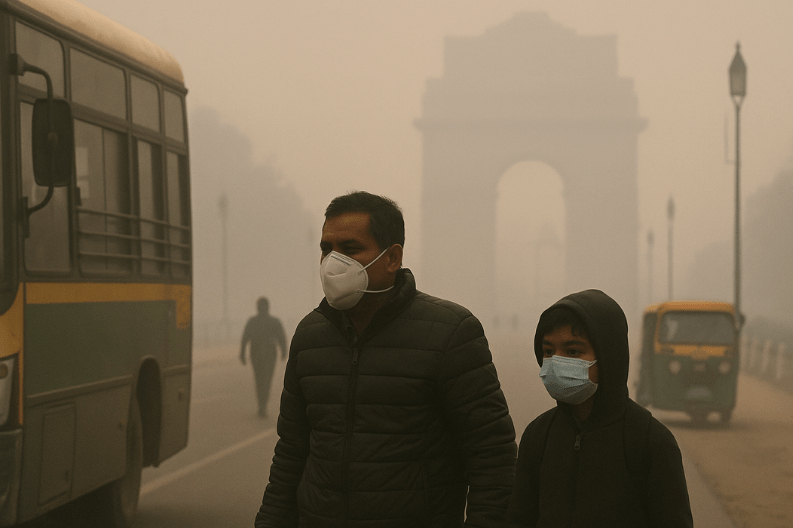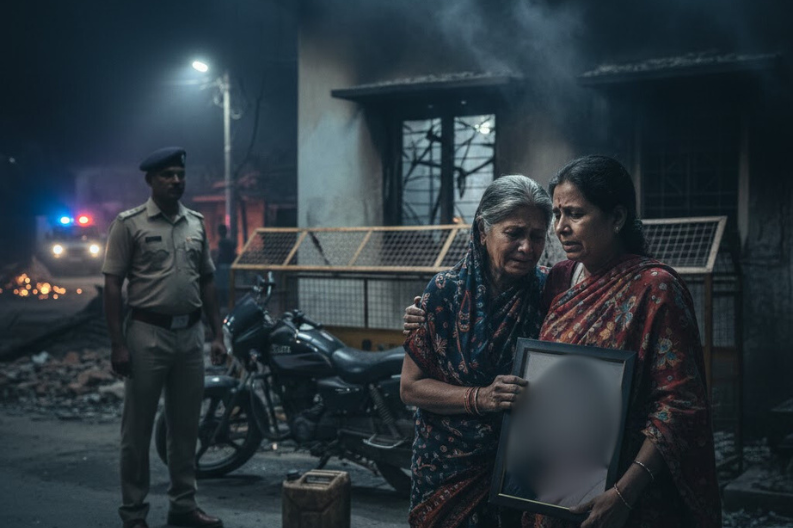Delhi suffers from severe smog as the city’s air quality continues to worsen, leaving millions of residents struggling to breathe. For the second day in a row, the Air Quality Index (AQI) in Delhi has stayed around 315, which falls under the “very poor” category. Such conditions can cause breathing problems, eye irritation, and other health issues, especially among children, elderly people, and those with respiratory illnesses.
Nearby areas are facing similar conditions. Noida’s AQI has reached 331, while Ghaziabad stands at 321. These numbers show that pollution is not limited to Delhi but affects the entire National Capital Region (NCR). Residents in these cities are finding it hard to stay outdoors for long periods. Many schools have advised students to wear masks or avoid outdoor activities.
A major cause behind this thick layer of smog is stubble burning in neighboring states like Punjab and Haryana. Farmers burn leftover crop residue after harvesting, releasing large amounts of smoke into the atmosphere. This smoke mixes with vehicle emissions and industrial waste, creating the toxic air that now covers Delhi.
Weather conditions are also worsening the problem. October usually brings cooler temperatures, and this year the minimum temperature dropped to 15.8°C, slightly lower than last year’s 15.9°C. Cooler air traps pollutants closer to the ground, preventing them from dispersing. As a result, the smog lingers for longer, especially during early mornings and evenings.
The Indian Meteorological Department (IMD) is keeping a close watch on the situation. Experts hope that light rainfall in the coming days could bring some relief by washing away pollutants from the air. Even a short spell of rain can temporarily improve visibility and reduce pollution levels.
To fight pollution, the New Delhi Municipal Council (NDMC) has started a new “mist sprayer project.” This system sprays fine water mist into the air to help settle dust and particles. If it works well, similar systems might be introduced in other cities like Chandigarh and Mohali. NDMC officials say these efforts are part of a larger plan to make Delhi’s air safer and cleaner.
Doctors have urged people to stay indoors as much as possible. They recommend wearing N95 masks when stepping out and using air purifiers at home. People are also advised to keep windows closed during peak pollution hours and drink plenty of water to help the body flush out toxins.
The government is under pressure to act quickly. Environmental groups are calling for stricter control on stubble burning, vehicle emissions, and construction dust. They argue that awareness programs and stronger enforcement could help reduce pollution levels over time.
Despite the grim situation, hope remains. Upcoming rains, stricter environmental laws, and cleaner technology can all help improve Delhi’s air. However, citizens must also do their part by using public transport, avoiding unnecessary vehicle use, and supporting green initiatives.
In conclusion, Delhi suffers from severe smog, but efforts from both authorities and citizens can make a difference. If everyone works together, Delhi could soon see clearer skies and healthier air for all.



